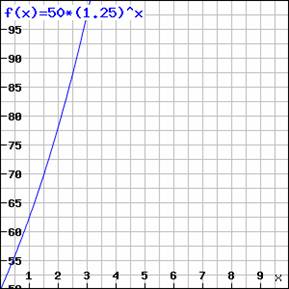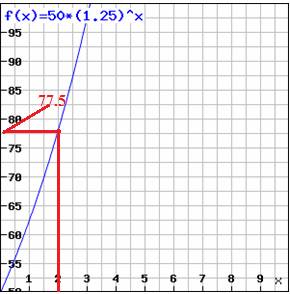Rationale behind functions, domains and ranges
Sometimes you might forget the rules for finding domains and ranges. Logical thinking might help you to recall
those rules or maybe even answer the questions if you cannot remember the rules.
Example
Suppose you don't remember what the domain for a logarithmic function is and you are asked the question,
"What is the domain of log10 (24x – 32)?"
Which of the following questions will help you solve this answer?
-
Does the domain of the logarithmic function relate to anything, perhaps another function?
-
What is the definition of a logarithmic function?
-
What is the formula for the domain of a function?
-
Can the domain of a function be positive and/or negative?
Solution
This question cannot be solved unless you know the definition of a logarithmic function, so the correct option is
b. This is because, by definition, if logbx=n then it means x=bn where b>0.
Now, if b is greater than 0, can you think of any value of n such that bn is less than 0? No, because a positive number when raised to any power will always give a positive value. Hence, x will always be greater than 0!. Can bn be equal to zero? Only if n is a very high negative value. Hence the domain will be x>0.
Using this concept we can find the domain of any logarithmic function. For the given function log(24x-32), since we can calculate the logarithm of only positive numbers,
24x – 32 > 0 or x > 32/24 or 4/3.
Try these problems
-
The number of sales made by a company from 1992 until a given date is given by s=50(1.25)x where x is the
number of years since 1992. Use the graphical model to calculate the sales made in the year 1994.

-
75
-
77.5
-
85
-
80
Answer: B
Explanation :

Year 1994 will be 2 units away from 1992 (1992 is (0,0)) and the value of f(x) at x=2 is 77.5.
-
How can the graph of function 3(x+2) -5 be derived from the graph of 3x?
-
Translating 2 units left and 5 units down
-
Translating 2 units right and 5 units down
-
Translating 2 units left and 5 units up
-
Translating 2 units right and 5 units up
Answer: A
Explanation :
3(x+2) -5
The graph of 3(x+2) is obtained from the graph of 3x by shifting 2 units along the negative x axis.
3(x+2) -5 will move the graph of 3(x+2) by 5 units along the negative y axis.